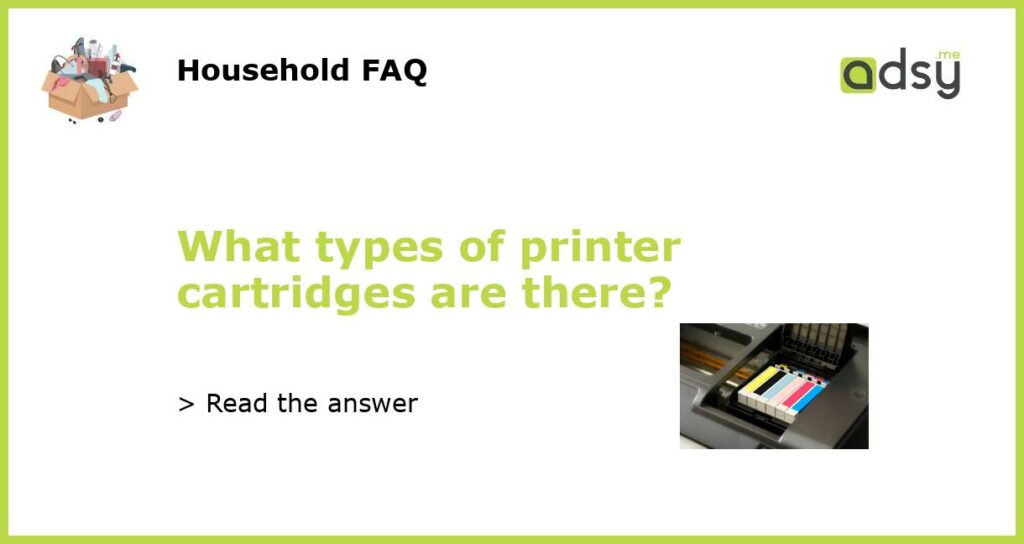Types of Printer Cartridges
Printer cartridges are an essential component of any printing system. They contain ink or toner that is used to produce high-quality prints. There are several types of printer cartridges available in the market, each with its own set of advantages and disadvantages. In this article, we will explore the different types of printer cartridges and help you choose the right one for your printing needs.
Inkjet Cartridges
Inkjet cartridges are commonly used in inkjet printers. These cartridges contain liquid ink that is sprayed onto the paper to create prints. Inkjet cartridges are available in two primary types: dye-based and pigment-based.
Dye-based inkjet cartridges are the more popular option as they produce vibrant and vivid colors. This makes them suitable for printing photos and images. However, dye-based ink may fade over time, making it less suitable for long-lasting prints.
Pigment-based inkjet cartridges, on the other hand, produce prints that are more resistant to fading. They are ideal for printing documents that need to withstand the test of time. However, pigment-based inks may not produce colors as vivid as dye-based inks.
Laser Cartridges
Laser cartridges are used in laser printers. Rather than ink, these cartridges contain toner, which is a fine powder made up of a mixture of plastic particles and coloring agents. Laser printers use a laser beam to transfer the toner onto the paper, creating prints.
Laser cartridges offer several advantages over inkjet cartridges. They are capable of producing high-quality prints with sharp text and fine details. Laser prints are also more resistant to water and smudges, making them ideal for professional documents.
There are two types of laser cartridges: standard and high-yield. Standard cartridges are more affordable and have a lower page yield, while high-yield cartridges are more expensive but can produce a higher number of prints. If you have a high printing volume, opting for a high-yield cartridge can be a more cost-effective choice in the long run.
Solid Ink Cartridges
Solid ink cartridges are a unique type of printer cartridge used in solid ink printers. Instead of liquid ink or toner, these cartridges contain solid blocks of ink. The ink blocks are melted and transferred onto the paper during the printing process.
One of the main advantages of solid ink cartridges is their environmental friendliness. They produce less waste than other types of cartridges and are made from non-toxic materials. Solid ink prints also have a unique, wax-like finish that is resistant to water and smudges.
However, solid ink cartridges can be more expensive upfront compared to inkjet or laser cartridges. They may also require more maintenance and have a longer warm-up time before printing.
Wide Format Cartridges
Wide format cartridges are designed for use in wide format printers, which are used to print large-scale graphics and images. These printers require cartridges that can handle the high ink volumes needed for larger prints.
Wide format cartridges are available in both inkjet and laser options, depending on the type of wide format printer you have. They are specifically designed for use in large format printing applications, such as posters, banners, and architectural drawings.
These cartridges can be more expensive than regular inkjet or laser cartridges due to their larger size and higher ink capacity. However, they are essential for achieving high-quality prints on a larger scale.
Compatible and Remanufactured Cartridges
Compatible and remanufactured cartridges are alternatives to OEM (Original Equipment Manufacturer) cartridges. Compatible cartridges are produced by third-party manufacturers and are designed to be compatible with specific printer models.
Remanufactured cartridges, on the other hand, are OEM cartridges that have been recycled, cleaned, and refilled with ink or toner. These cartridges are often more affordable than OEM cartridges and can help reduce electronic waste.
It’s important to note that using compatible or remanufactured cartridges may void your printer’s warranty. However, if you are looking for a more cost-effective option or are conscious of the environmental impact of printing, these cartridges can be a viable alternative.






